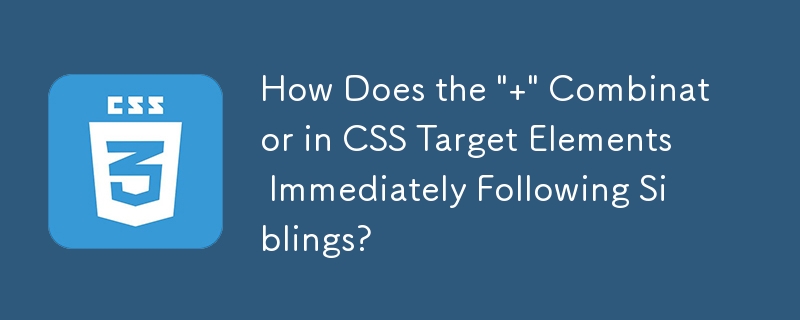

Understanding the " " Combinator in CSS
CSS employs the " " combinator to target elements that immediately follow specific siblings. For instance, in the rule "h2 p", only the p element immediately after an h2 element will be affected by the specified styles.
Visualizing the Concept
Consider the following HTML code:
<code class="html"><h2>Headline!</h2>
<p>The first paragraph.</p> <!-- Selected [1] -->
<p>The second paragraph.</p> <!-- Not selected [2] -->
<h2>Another headline!</h2>
<blockquote class="quote">
<p>A quotation.</p> <!-- Not selected [3] -->
</blockquote></code>When applying the "h2 p" selector:
) is selected because it directly follows an h2 (
) is not selected because it follows the first paragraph, not the h2 element.
) is not selected as there is no h2 preceding it in the blockquote.
Comparison with "~" Combinator
The " " combinator specifically selects only elements that are immediate siblings, unlike the "~" combinator which selects all sibling elements, regardless of their position. For example, "h2 ~ p" would select both paragraphs in the above HTML, while "h2 p" would select only the first paragraph.
The above is the detailed content of How Does the ' ' Combinator in CSS Target Elements Immediately Following Siblings?. For more information, please follow other related articles on the PHP Chinese website!




